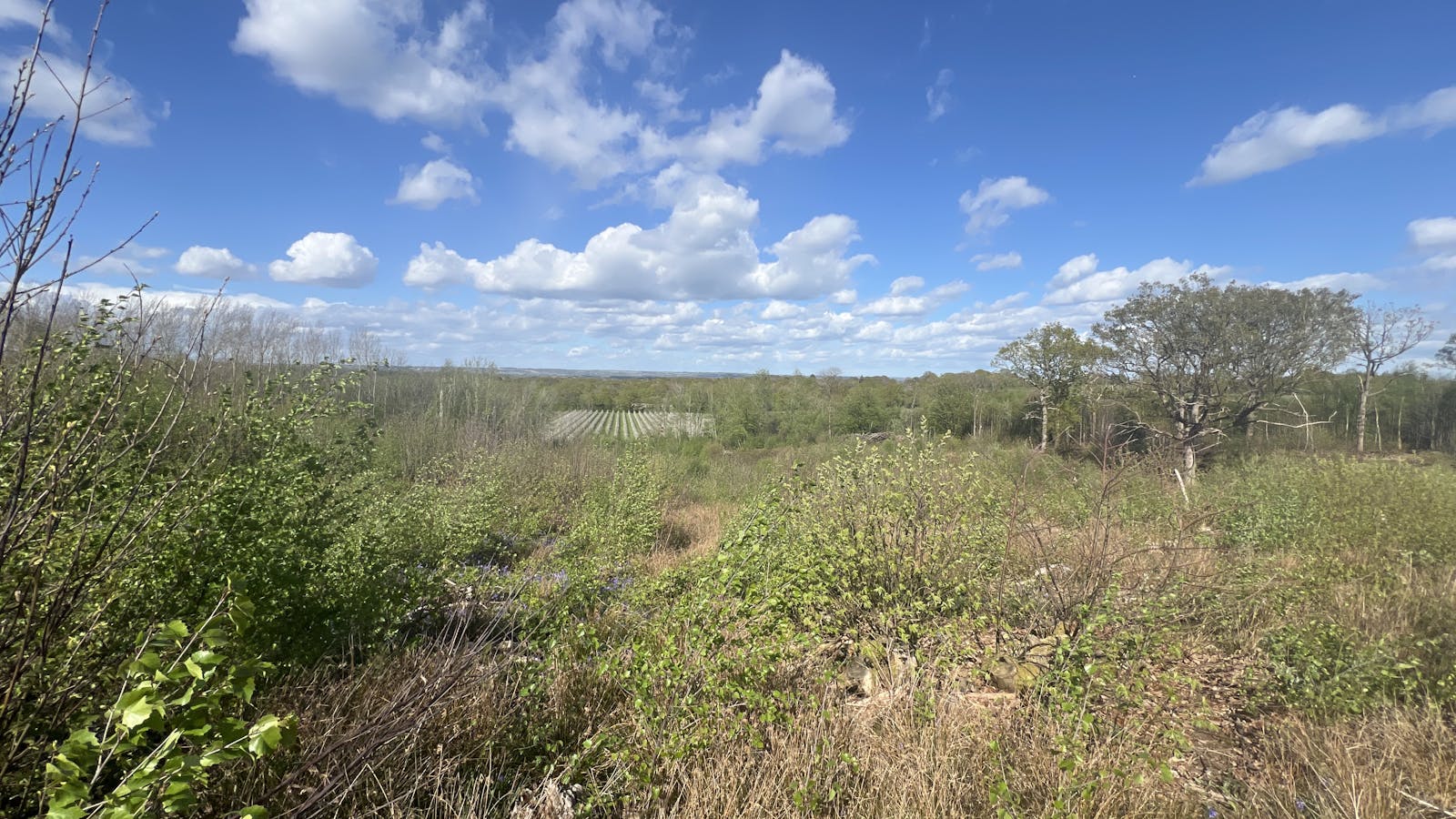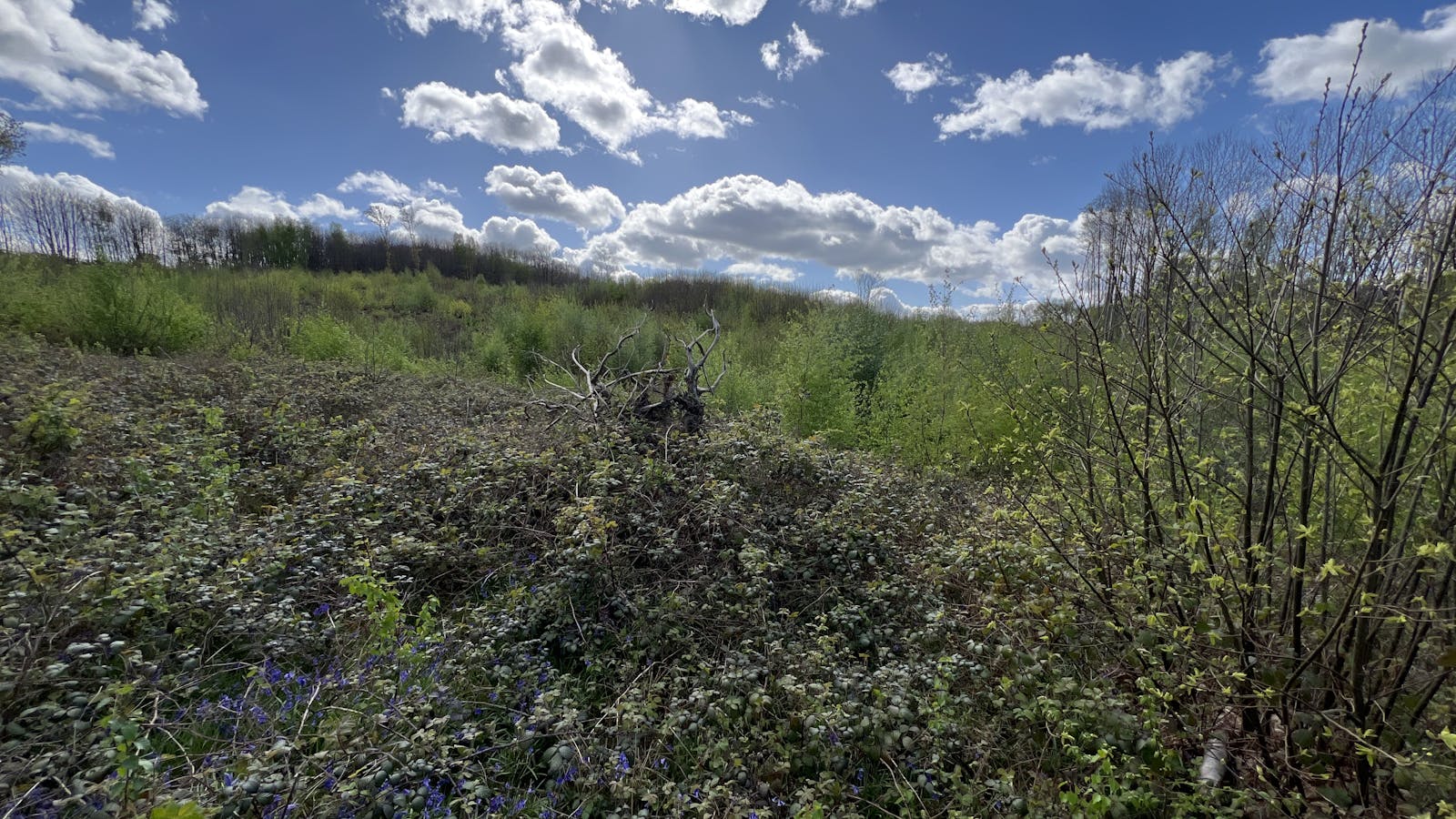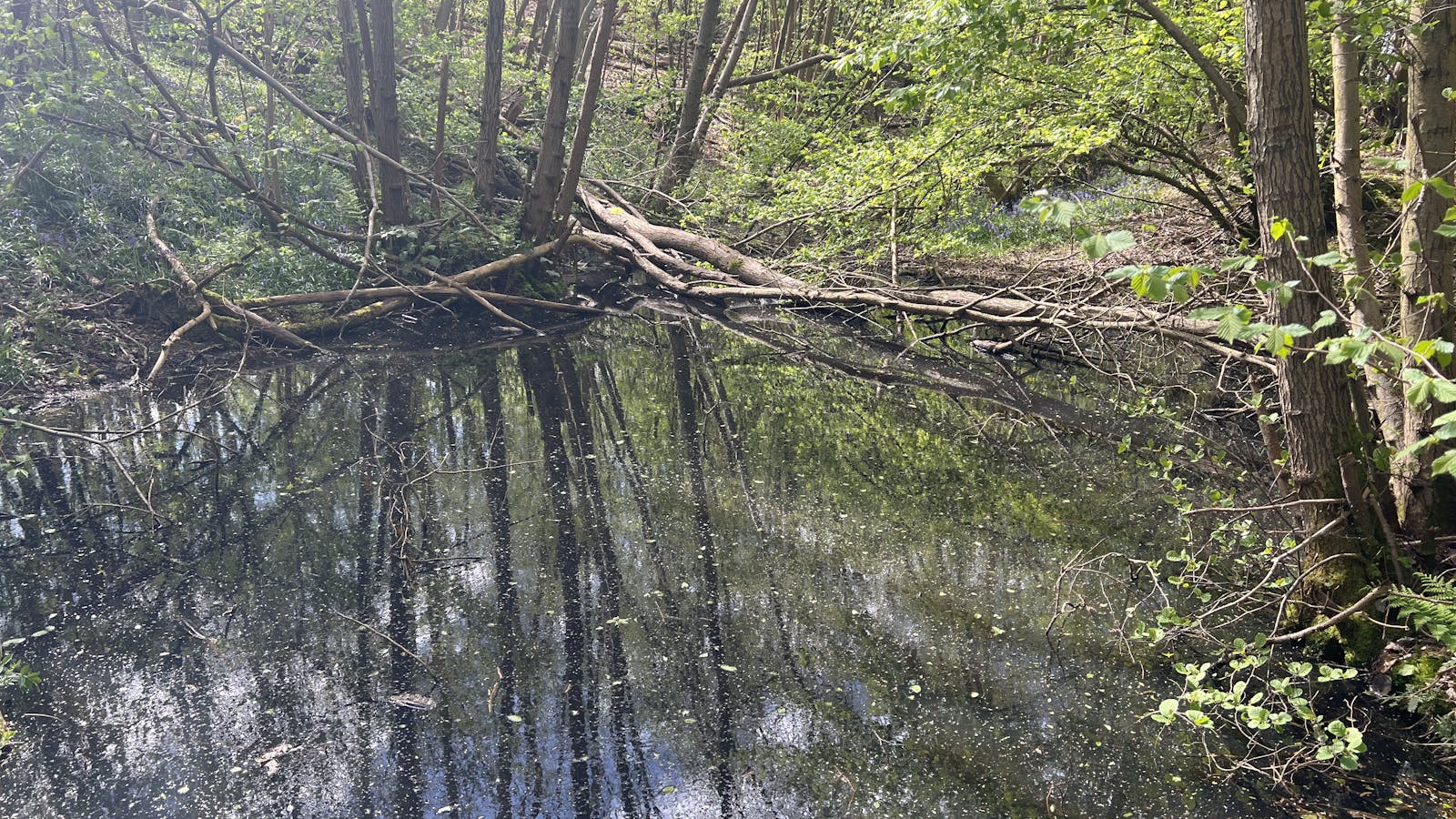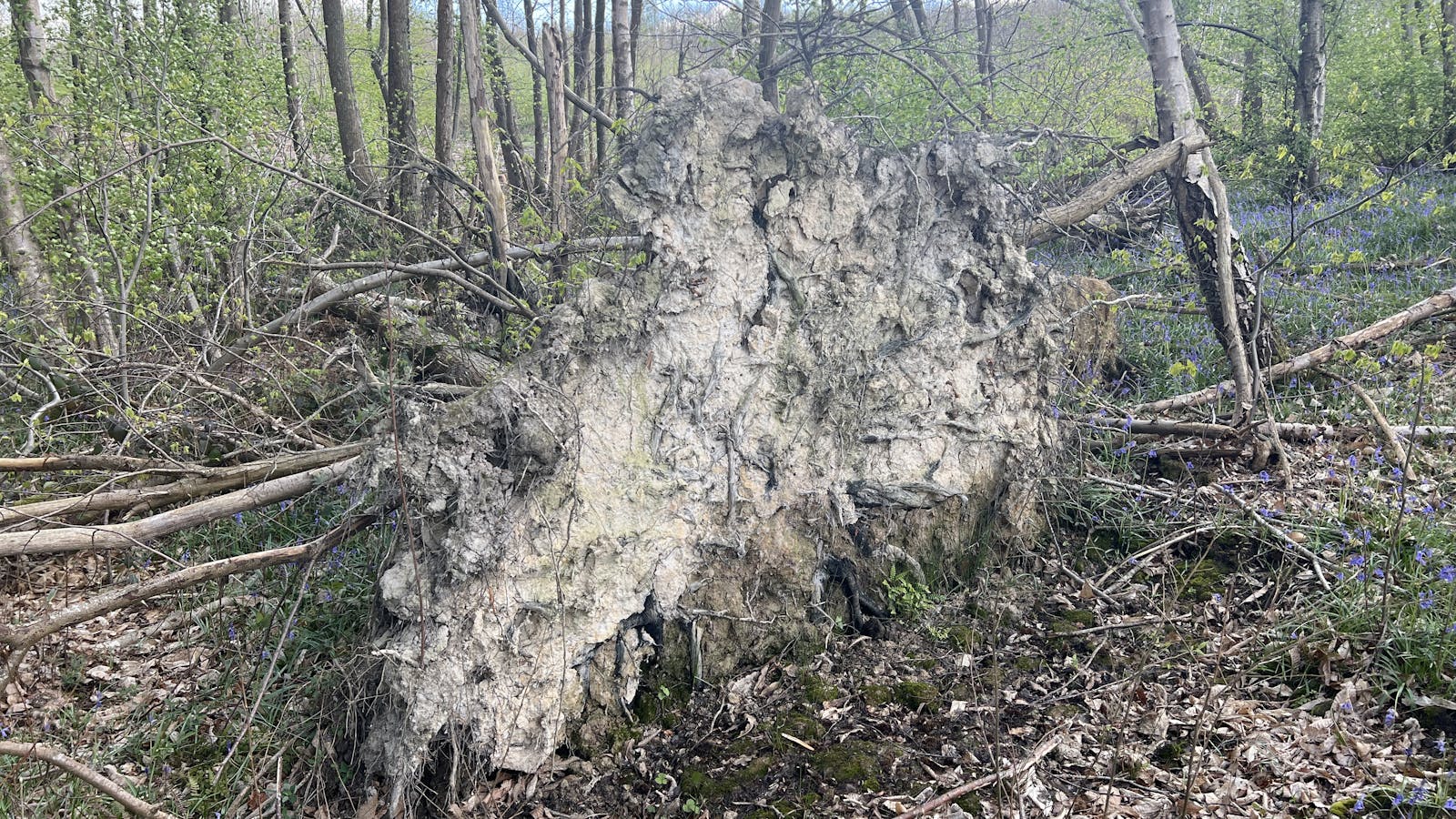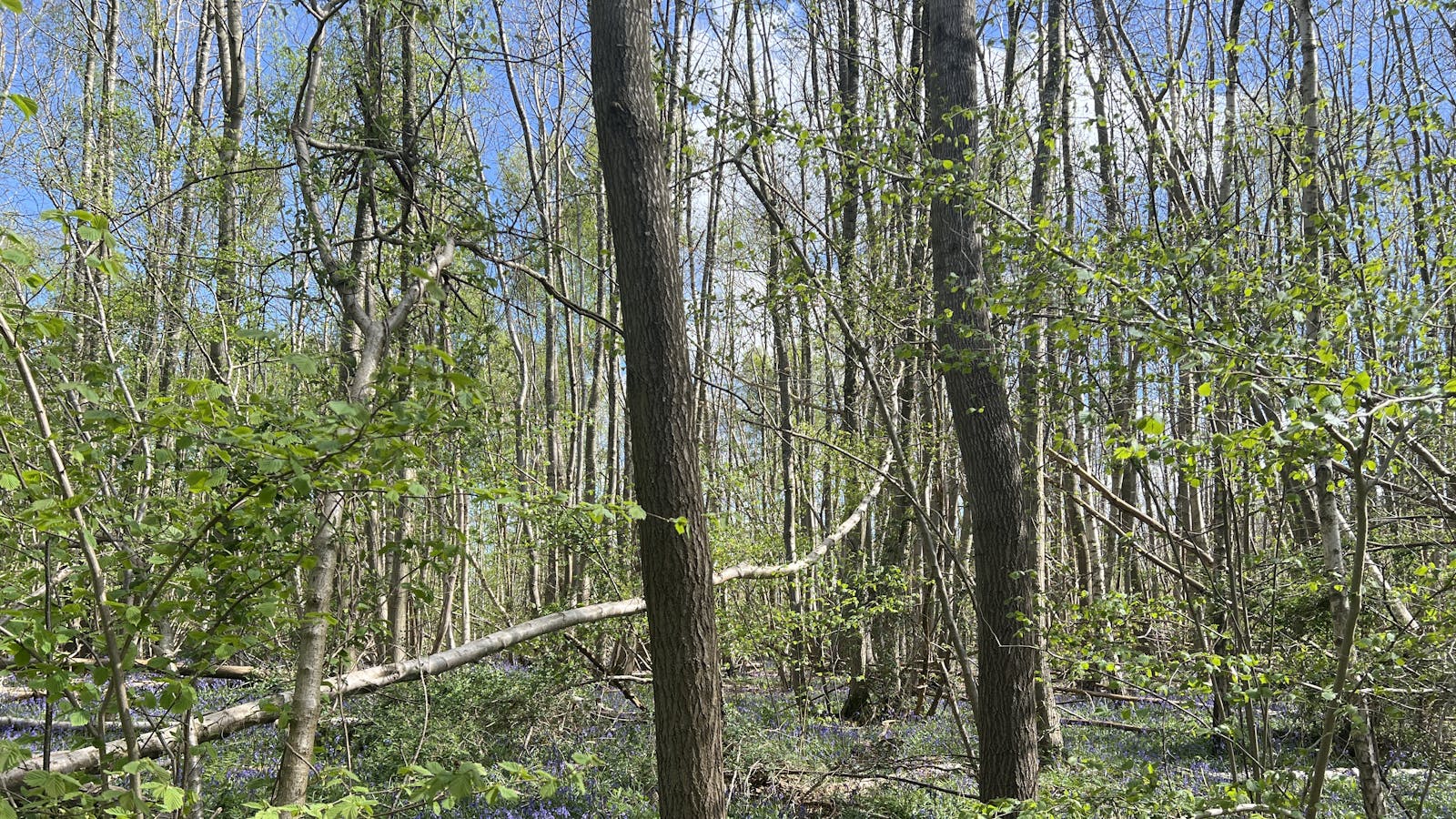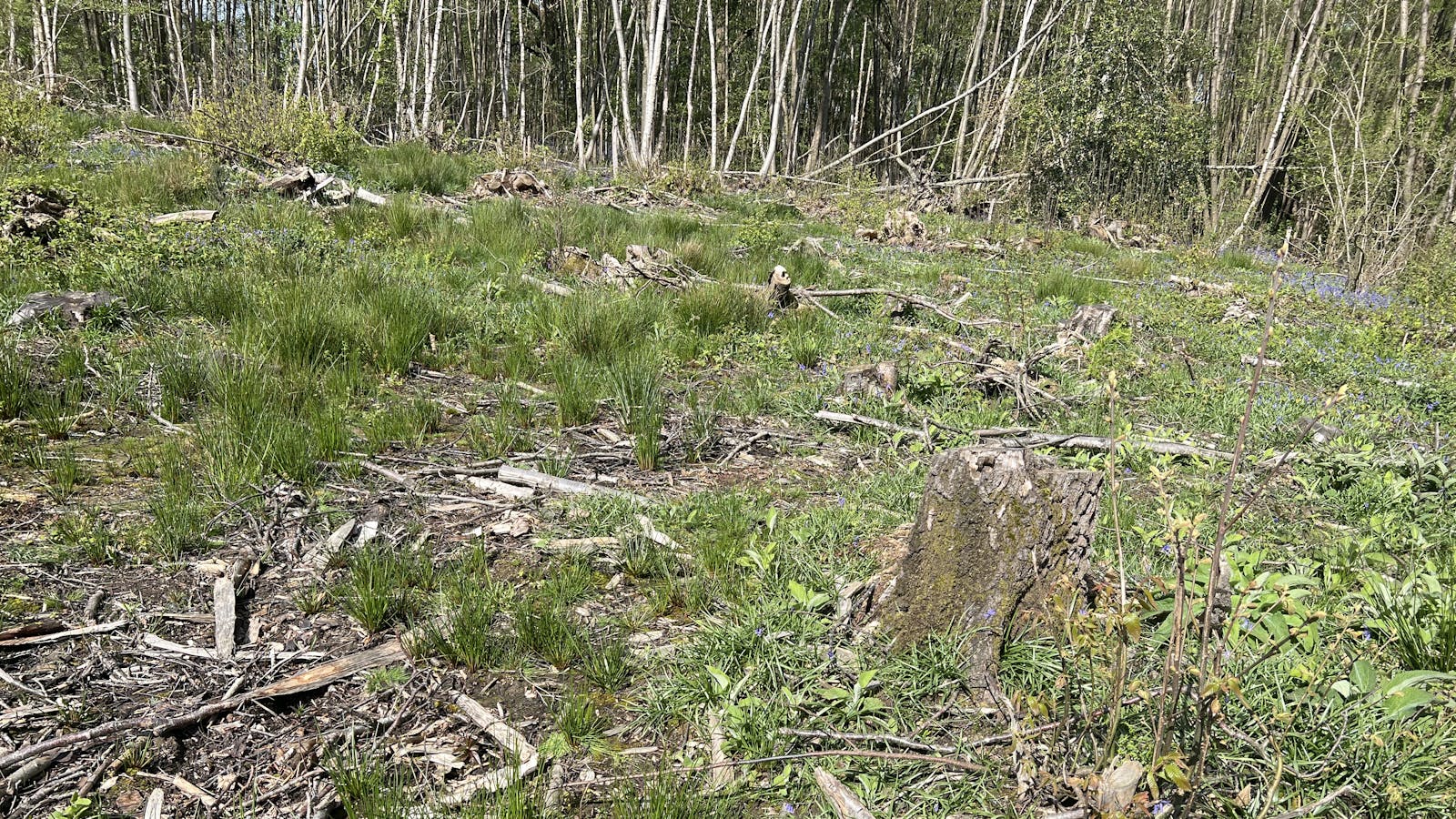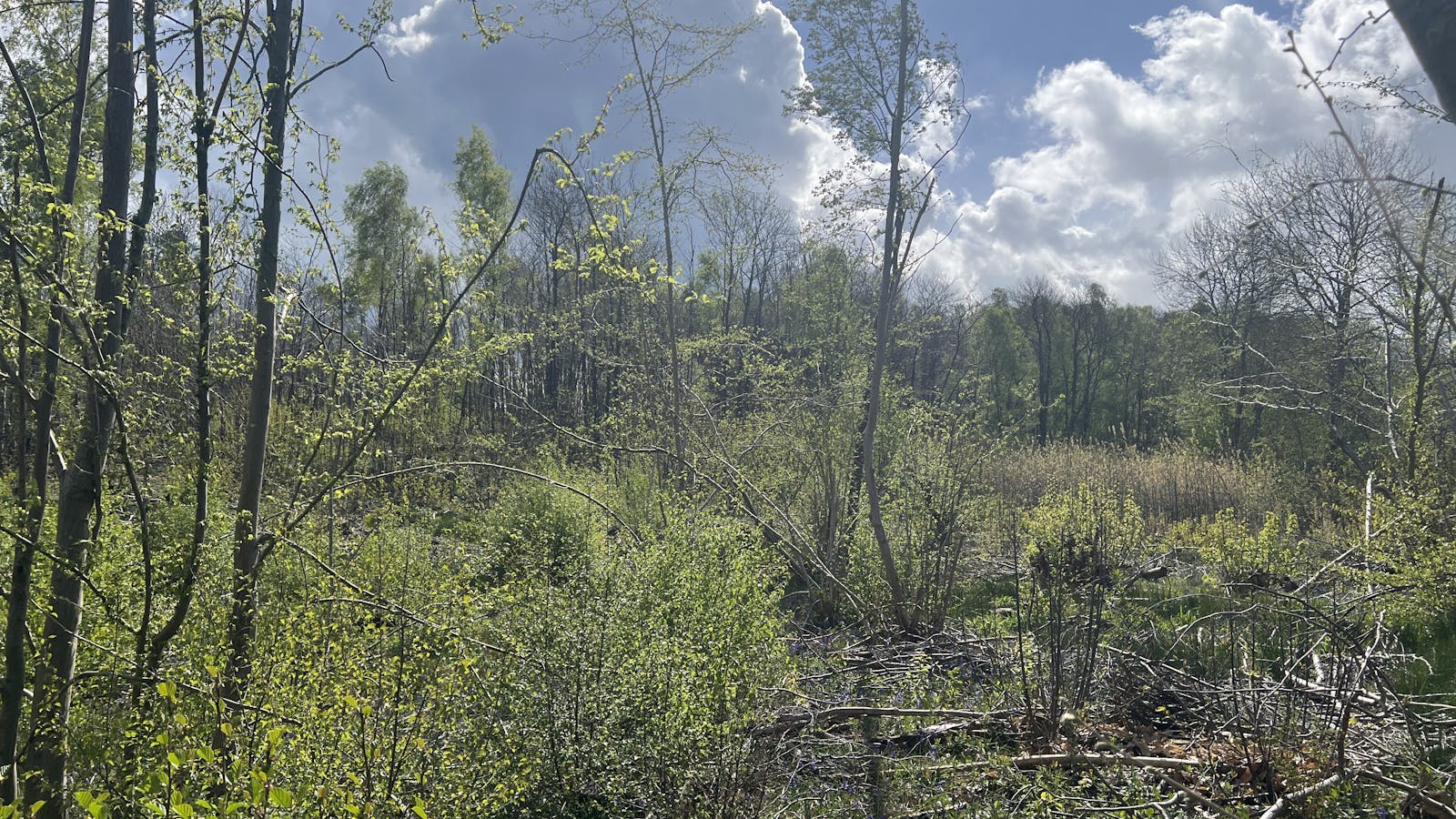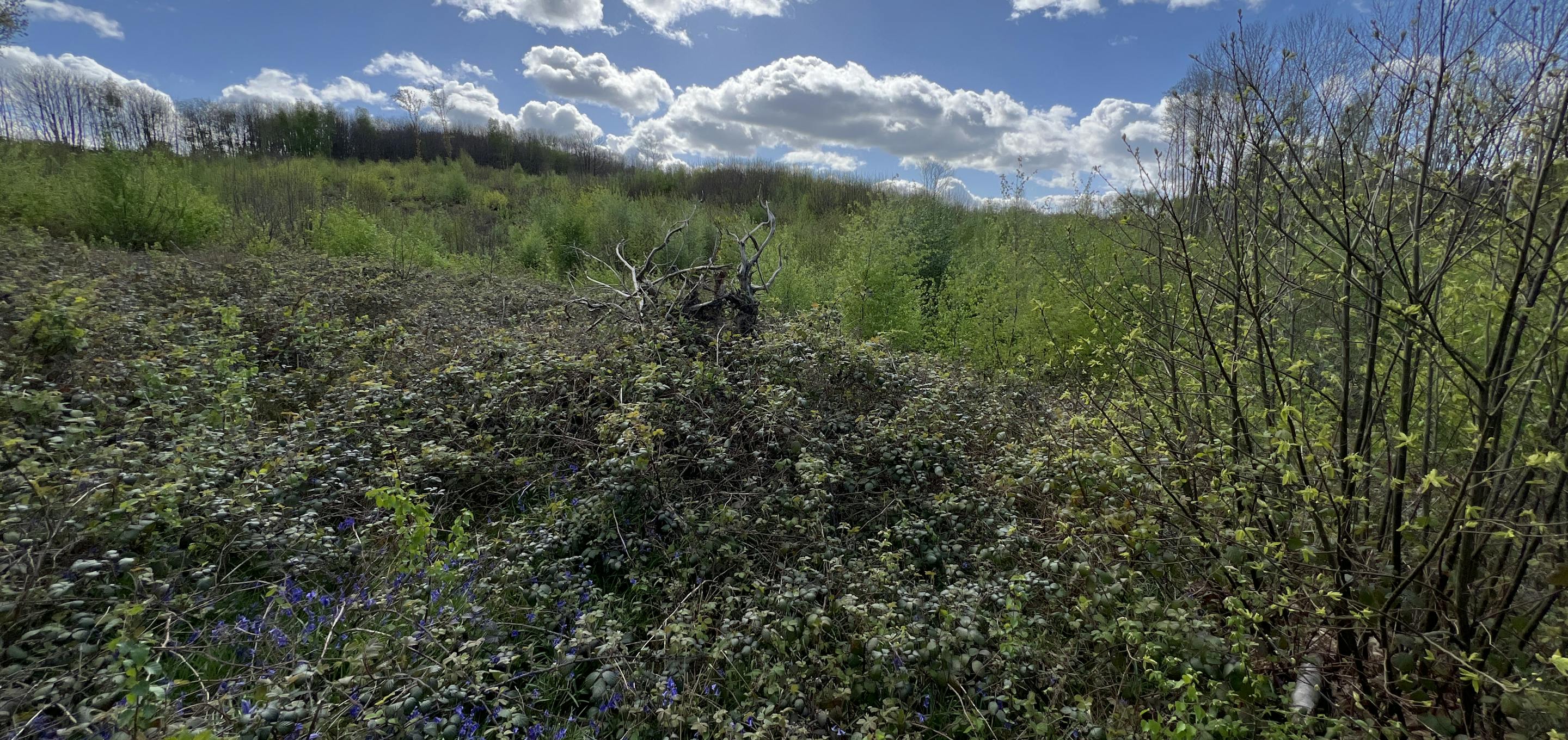
Foxearth Wood BNG offset site
Local Planning Authority: Tunbridge Wells
National Character Area: High Weald
Biodiversity Opportunity Area: High Weald
OS grid ref: TQ 79751 39657
Postcode: TN17 2AS
What3words: ///unscathed.buffoon.rust
Habitat units available - Surveyed 2024
A total of 11.953 units are available from the following habitat types:
Woodland
Lowland mixed deciduous woodland (High distinctiveness) - 11.533 units
Ponds and Lakes
Ponds (priority habitat) - 0.420 units
Site description
Foxearth Wood is located 1.45 km to the northeast of Cranbrook and 2.45 km to the southwest of Frittenden.
The site comprises ancient lowland mixed deciduous woodland, ponds, and paths/tracks. It falls within the Leggs Wood, Frittenden Local Wildlife Site. This site has been designated because it comprises a series of ancient woodlands with records of at least 34 ancient woodland indicator species occurring throughout.
In 2023, Foxearth Wood was shown to be visited by a turtle dove wearing a radio-tracking device. Turtle doves are a red-list species at high risk of extinction in the UK having declined an estimated 98% since the 1970s, with southeast England being one of the few remaining places to find them. The landowner is keen to encourage more turtle doves to nest on this site.
The key habitat requirement for turtle doves involves a suitable combination of dense scrub/young woodland, accessible seed resource in field margins, and shallow sided ponds. This project has been designed with the aim of developing this type of habitat mosaic.
Non-priority ponds will be enhanced to priority status, while the ancient woodland will be managed to enhance its condition and create a diversity of structure with open spaces to encourage understorey development and create habitat for turtle dove and a range of other species.
Fill out a form at the bottom of this page or email your development's BNG metric to bngenquiries@adonisblue.org.uk for a free BNG consultation.
These units are valid for a maximum of two years, provided site conditions do not significantly change. If more than two years have lapsed between the site survey and habitat works being undertaken, an updated survey will be necessary to ensure recommendations remain valid.

Habitat Transitions


Site Photos
